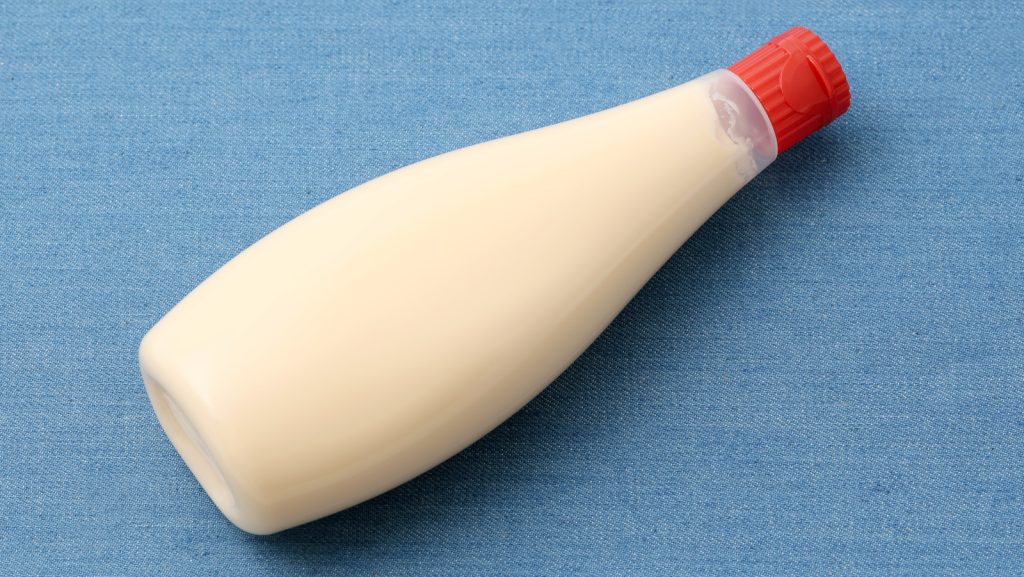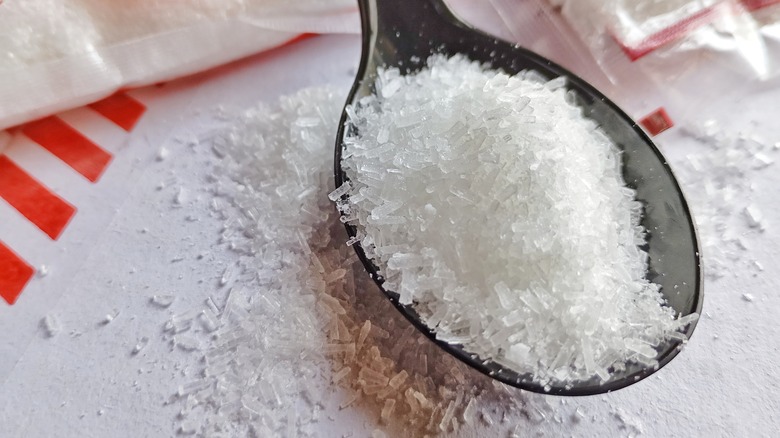
Kewpie Mayo is every chef’s mayonnaise of choice — and yes, there is a difference between it and regular mayonnaise. Kewpie Mayo uses more egg yolks, making it extra, extra rich. It also includes vinegar, which cuts through the richness of the egg whites and allows its secret umami ingredient, MSG, to shine. But while its founder originally marketed it as a Japanese-version of an American condiment, the Kewpie Mayo brand has also developed a variety of formulations that cater to different, regional tastes. As a result, you’ll find altered Kewpie Mayo formulations in a number of countries, including the U.S., where Costco carries its American formulation.
Next time you’re at Costco, take a look at the back of the bottle. There, you’ll find the words: “Product of U.S.A.” But what exactly makes it different? A few things. For one, American Kewpie Mayo lists water as a main ingredient along with three varieties of vinegar — rice, red wine, and distilled — giving it a more pronounced vinegar flavor and looser texture. It also contains mustard flour, giving it a distinctly yellow color, along with the addition of sugar and yeast extract.
Possibly the greatest difference, however, is the lack of the Japanese condiments’ signature ingredient: Monosodium Glutamate, or MSG. So while the American version of Kewpie Mayo is still considered a good alternative, it lacks the inherent umami flavor and richness that the original Japanese version is celebrated for. Knowing that, you might want to think twice before you grab a bottle from Costco.
What is MSG and why is it missing from the U.S. made Kewpie Mayo?
Since it was discovered in 1908 as the source of umami flavor, MSG has been enjoyed safely as a seasoning all over the world. However, a history of misinformation and xenophobia has made MSG a contentious ingredient in the U.S. — specifically stemming from the coining of “Chinese Restaurant Syndrome” in 1968, when the editor of a medical journal suggested that MSG contributed to symptoms after visiting a Chinese restaurant and, subsequently, lead to a number of misleading studies. In turn, “MSG Free” labels became a trendy way to market food items to the many misinformed people who avoided consuming it. But the misinformation continues to influence foods in the U.S. today, with American Kewpie Mayo being a prime example.
Despite decades of American scientists independently verifying MSG’s safety, and it being recognized as safe by the U.S. Food and Drug Association, racist rhetoric continues to raise unwarranted questions about MSG as a food ingredient in the U.S. — and however unnecessarily, Kewpie Mayo decisively leaves its star ingredient out of its American formulation so as not to ostracize itself or others. Even if it means that, without it, the Kewpie Mayo has a noticeably different flavor. That’s why, simply said, U.S.-made Kewpie Mayo is only a subpar iteration of the real thing, and all for no reason apart from needless stigma. You’ll be happier getting it from your local Asian grocer than Costco.










